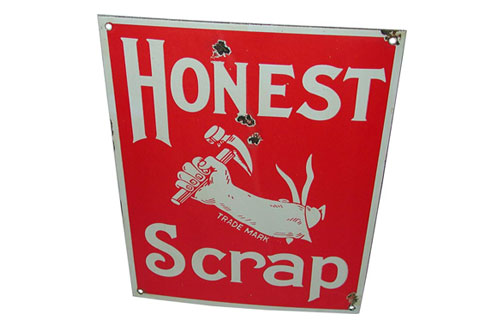The stories about the tomato blight are all over the news, including this op-ed piece in the New York Times, “You Say Tomato, I Say Agricultural Disaster.”
To my understanding it is an airborne fungus that wipes out tomato and potato crops. This year it’s affecting tomatoes hard.
From what I’ve read, the way it started this is year can be traced to the big businesses such as K-Mart, Wal-Mart and Home Depot. They buy their plants from industrial farms down South, which had the outbreak.
These plants were then shipped up north and sold to farmers and consumers. Since it’s an airborne disease direct contact isn’t necessary and it can affect a much larger population of plants.
Looking at my cherry tomato plants, they seem to be blight resistant.
The main reason why I think they are is because I bought from Silver Heights Farm, a local nursery.
Trina, the gardener at Silver Heights, starts from seed and oversees everything herself. The distance the plant travels from Silver Heights to my gardens is 30-40 miles, so there is less chance for exposure to disease.
It’s also easier for a local nursery to identify and isolate any chance of blight or disease at first look. The big industrial farms have too much acreage to be able to. By the time it’s noticed, it’s already planted in your garden and effecting your crop.
While it’s not guaranteed that what you buy from your local nursery won’t have blight, I think there is a much better chance of it not than if you were to buy from a big chain store.
httpv://www.youtube.com/watch?v=yFuCHuJC62w













I grew all of my tomatoes from seed, at home. All of my seeds were from locally developed Amish heirlooms from a small independent seed seller. I thought I had escaped the blight, and then in Mid August…. Whamo!
Your philosophy of growing only plants from local garden suppliers is a good one. People should avoid the big box stores for vegetable plants, but that is not the only cause of blight. Weather conditions had a lot to do with it this year. Also, Cherry Tomatoes are naturally blight resistant. My large tomato plants all got infected with blight, while my Cherry Tomatoes were not affected at all.
here is more on Late Blight….
http://metrofarming.blogspot.com/2009/08/late-b…
Great Blog!! And way to go with the Urban Farming!!
I grew all of my tomatoes from seed, at home. All of my seeds were from locally developed Amish heirlooms from a small independent seed seller. I thought I had escaped the blight, and then in Mid August…. Whamo!
Your philosophy of growing only plants from local garden suppliers is a good one. People should avoid the big box stores for vegetable plants, but that is not the only cause of blight. Weather conditions had a lot to do with it this year. Also, Cherry Tomatoes are naturally blight resistant. My large tomato plants all got infected with blight, while my Cherry Tomatoes were not affected at all.
here is more on Late Blight….
http://metrofarming.blogspot.com/2009/08/late-b…
Great Blog!! And way to go with the Urban Farming!!
Thanks for the comment. Definitely not “the reason” but it definitely helps out. Like you said, it's airborne, so it could be affected by a neighbor.
Appreciate the link.
OK, but aren't you growing tomatoes on a fire escape in the city? Are there a lot of nearby growers whose blighted plants could throw spores at your plants?
Culture is a big part of the late blight problem. The fungus is around… it may be in a garden's soil always, but only express itself during wet growing seasons. Certainly, getting blight on nursery stock is a nasty circumstance, and starting your own plants from seed is the most sure-fire way of avoiding infection. If you're not starting your own, then absolutely buy local.
Still, if there is blight up-wind from your garden or if there's a lot of rain, your plants might succumb. Culture can help: The tomato plants I've staked and plucked free of suckers have grown to 8 and 9 feet and produced huge harvests… they are only now showing signs of blight (with nearly no tomatoes left on the plants). Only 20 yards away in a 2nd planting bed, I let the tomatoes “free range;” that is, the plants are lying on the ground. Those plants along with about 50% of their fruit are rotting away with blight.
Thanks for posting on this ugly topic. I applaud your call for people to think local when they do their garden shopping.
Wow. Thanks for the insight. Good stuff.
Yes I am growing on my fire escape and bought from the farmers market in the city. Lots of the chain stores in the area though. I don't personally know of anyone who fell victim of the blight, but also don't really know of anyone growing tomatoes either.
I was posing this as a reason as to why, not the reason as to why.
Thanks again for your comment and wisdom. Much appreciated.
Wow, that's awesome! I wish more urbanites grew their own food!
I think you might be mistaken about this. Our cherry and grape tomatoes came from Lowes, and also were appear to be blight resistant. Our Romas, and Mr. Stripeys, also from the same source were hit hard. But we found that if we trimmed out the bad foliage, and got rid of the tomatoes that had blight it really cut down on the spread. We are still harvesting plenty.
That's my goal to inspire others to do it. You growing your own?
Thanks for the comment. I wasn't saying that this is the sole reason, but I think that it is a reason as to why. Don't believe that there is one reason, but there are things that can be done to lessen the risk.
That's my goal to inspire others to do it. You growing your own?
Thanks for the comment. I wasn't saying that this is the sole reason, but I think that it is a reason as to why. Don't believe that there is one reason, but there are things that can be done to lessen the risk.
I fear my tomato plants will be very late this year, I forgot to plant the seedlings up to the top leaves as you should.
how to grow tomatoes
how to grow tomatoes
appreciate what you’re trying to do, as well as your yearning to support your local nurseries. My understanding is that the blight isn’t ‘contracted’ or anything like that. If folks in the south sold it to Lowe’s and big box stores, than you might not necessarily have the blight if you bought it in that store (only if blight had struck when you bought it). Like you said in your piece, it’s airborne and can travel for a few miles. It just also happens to be that the south and the east coast aren’t natural habitats for tomatoes (humidity), and fungus and the blight thrive in it. Something tells me more blight is due to a warmer spring and early summer than anything else. Suffice it to say, California, is a much better climate to grow tomatoes (not humid).
I’ve learned over the years the best way to go is: buy local and avoid big box stores. They often have GMO plants too! I harvest my own seeds and start my seeds indoors usually. The exception on starting date could be this year due to severe and prolonged winter.
i grow from beautiful non gmo heirloom seeds but early blight is in my soil and inevitably my plants become infected. even if i take all natural precautions. also my plants were amazingly strong and healthy before planting. i had a local farmer even tell me he was jealous of how healthy and stocky my brandywines were. but early blight is a mold that is either in your soil or not and lucky me it’s in mine. the spores can be airborne as well but there is no evidence that it has been transported from southern infected plants.